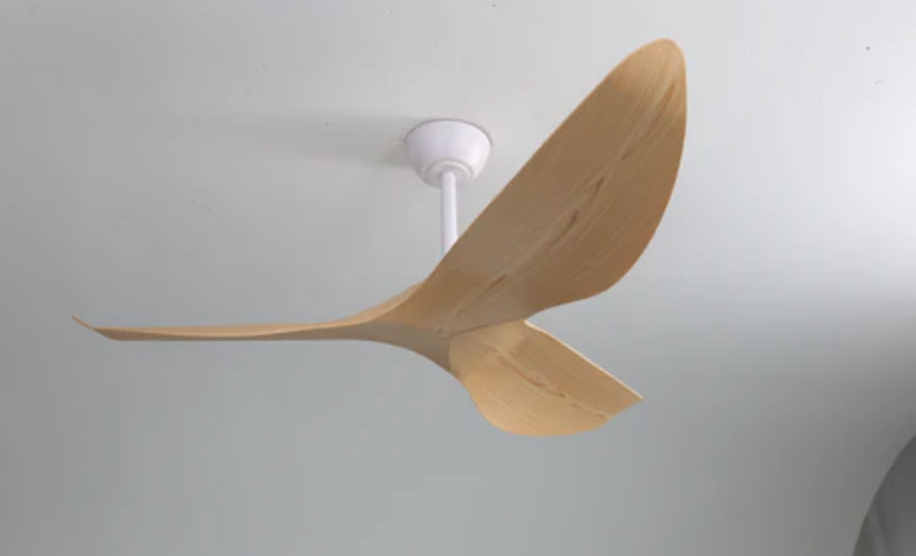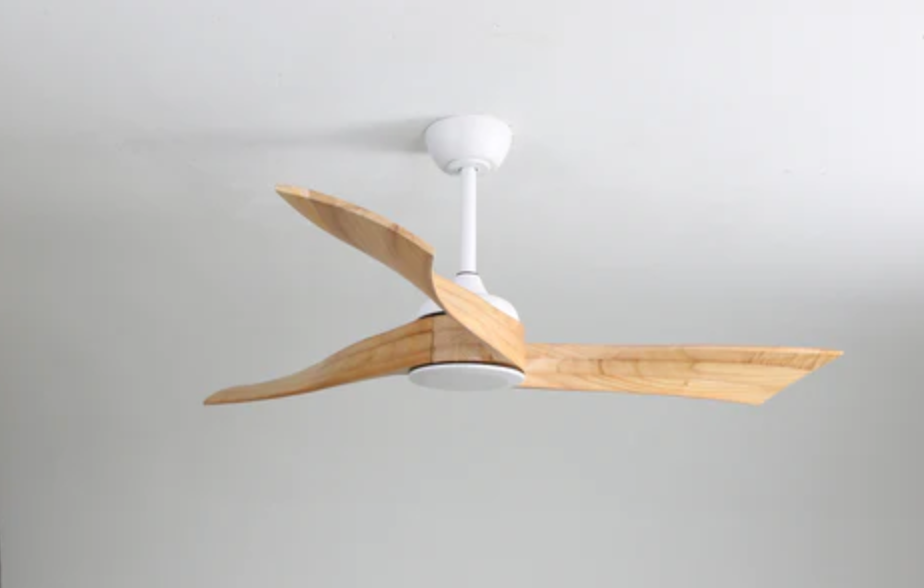
The Benefits of Ceiling Fans with Adjustable Fan Speeds
Ceiling fans have long been recognized for their ability to provide cooling comfort and energy efficiency in residential and commercial spaces. However, recent advancements in fan technology have introduced the concept of ceiling fans with adjustable fan speeds, offering enhanced functionality and customization options. This essay explores the benefits of ceiling fans with adjustable fan speeds, highlighting their impact on comfort, energy savings, and versatility. It also discusses the considerations for selecting the right fan and the future possibilities of this innovative technology.
Introduction: Ceiling fans have played a pivotal role in maintaining a comfortable indoor environment for decades. Traditionally, these fans operated at a single speed, providing a consistent airflow. However, with the introduction of ceiling fans equipped with adjustable fan speeds, users now have the ability to tailor the fan's performance to their specific comfort requirements. This essay explores the advantages of ceiling fans with adjustable fan speeds, focusing on their impact on comfort, energy efficiency, and versatility.
Customized Comfort: One of the key benefits of ceiling fans with adjustable fan speeds is the ability to customize the airflow and achieve personalized comfort levels. Different individuals have varying preferences when it comes to air movement and cooling. With multiple speed settings available, these fans offer the flexibility to adjust the fan's speed according to personal comfort preferences, room size, and external temperature conditions. Whether it's a gentle breeze for a mild day or a more powerful airflow for hot summer days, adjustable fan speeds provide the control needed to create the desired level of comfort.
Energy Efficiency: Ceiling fans with adjustable fan speeds contribute to energy efficiency by optimizing the use of electricity. Unlike traditional fixed-speed fans, these fans allow users to select lower fan speeds when cooling requirements are less demanding. By operating at lower speeds, the fan consumes less energy while still providing a comfortable airflow. This energy-saving feature can have a significant impact on reducing electricity consumption and lowering utility bills. Additionally, the ability to adjust fan speeds enables users to supplement or even reduce the reliance on air conditioning, further contributing to overall energy efficiency in a space.
Noise Reduction: Another advantage of ceiling fans with adjustable fan speeds is their ability to reduce noise levels. Traditional fans operating at a single speed may produce excessive noise, especially at higher speeds, causing discomfort and distractions. In contrast, fans with adjustable speeds allow users to select lower settings, resulting in quieter operation. This is particularly beneficial in bedrooms, libraries, offices, or any environment where low noise levels are desired. The ability to adjust fan speeds provides a quieter and more peaceful atmosphere without compromising on the cooling effect.
Versatility and Adaptability: Ceiling fans with adjustable fan speeds offer versatility and adaptability to different seasons, weather conditions, and personal preferences. During the summer months, higher fan speeds can provide a cooling breeze, while in winter, lower fan speeds can be used to circulate warm air that tends to rise. This adaptability allows these fans to be used effectively throughout the year, making them a valuable investment. Furthermore, adjustable fan speeds accommodate changes in room occupancy, allowing users to adjust the airflow based on the number of people present or the activities taking place in the space.
Considerations for Selecting the Right Fan: When selecting a ceiling fan with adjustable fan speeds, several factors should be considered. Room size, ceiling height, and the desired airflow capacity should be taken into account to ensure optimal performance. Additionally, it is important to consider the quality and durability of the fan's motor, as well as the fan's design, aesthetics, and compatibility with the existing interior decor. Noise levels and energy efficiency ratings should also be evaluated to make an informed decision that meets specific comfort and efficiency requirements.
Future Possibilities: Ceiling fans with adjustable fan speeds have already transformed the way we experience comfort and energy efficiency. However, advancements in technology present exciting possibilities for the future of these fans. Manufacturers may integrate smart features into these fans, allowing users to control fan speed remotely through mobile applications or voice commands. This integration with smart home systems will enhance convenience and provide even greater customization options. Additionally, innovations in motor technology may lead to quieter operation and improved energy efficiency, further optimizing the performance of these fans.
Conclusion: Ceiling fans with adjustable fan speeds offer numerous advantages in terms of customized comfort, energy efficiency, noise reduction, and versatility. The ability to tailor the fan's speed to individual preferences and specific room conditions enhances the overall comfort experience. Energy efficiency is improved by optimizing electricity usage, reducing utility bills, and contributing to a greener environment. These fans also provide quieter operation, creating a peaceful atmosphere. With their adaptability to different seasons and activities, they offer versatility that makes them a valuable addition to any space. Considerations such as room size, motor quality, and design should be taken into account when selecting the right fan.
People also ask these questions
What is the best speed for a ceiling fan?
For large rooms, two or more smaller ceiling fans are better than a single large one. What should you look for when it comes to wind speed? The average wind speed factor of a ceiling fan is about 2.5 MPH, which won't cool you off adequately. Instead, find a model with a wind speed factor of 4 MPH or higher.
What affects the speed of a ceiling fan?
The higher the CFM of a fan, the more air it can move, and the faster it will spin. Ceiling fans with higher CFM ratings are better suited for larger rooms or areas with high ceilings. 2. The number of blades and sizes: The number and size of blades on a ceiling fan can significantly affect its speed.
Does higher fan speed increase performance?
The upside of higher Fan RPMs? Your CPU will run much cooler and last longer, and you can overclock it for better performance. You can always replace your stock PC fan with something custom that runs quieter at high RPMs, so no annoying noise.
Why does my ceiling fan go faster at night?
This happens because the mains voltage during night-time goes up as most of the electrical loads such as lights are switched off. This speed increase of fan not only will consume more power but will also increase the noise level.
How do I know if my ceiling fan is powerful?
Each ceiling fan comes with an Energy Information label (see below) which measures airflow in CFM. The higher the CFM, the more powerful the fan. Your average fan is around 4,000 - 5,000 CFM at high speed.
In conclusion
Ceiling fans with adjustable fan speeds provide enhanced comfort, energy efficiency, and versatility. With the ability to customize airflow, reduce noise levels, and adapt to different weather conditions, these fans have become an essential component of modern living spaces. Their ability to optimize energy usage and supplement air conditioning systems contributes to overall energy savings. As technology continues to advance, we can expect further improvements in these fans, offering even greater convenience and performance. By embracing ceiling fans with adjustable fan speeds, individuals can create an ideal indoor environment that promotes comfort, efficiency, and well-being.


